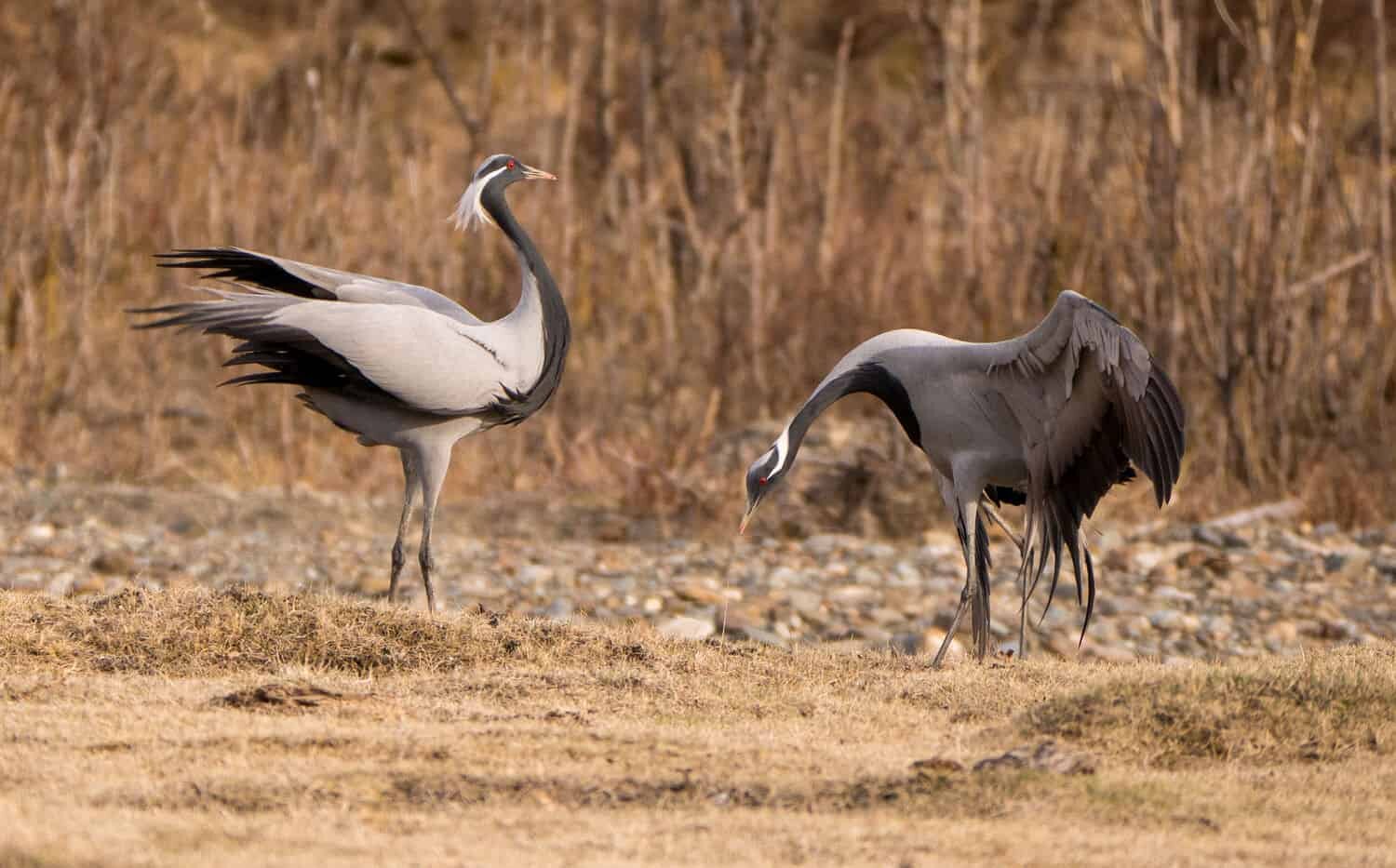Not far from the district center of Ongudai village, at 622 km of the Chuysky tract an amazing place is located – the Karakol valley. It lies on both banks of the Karakol River, between taiga-covered mountain ranges. The translation of Karakol from Altaian language can have multiple interpretations: 1) a black lake, that is, a lake fed by underground water (Kara kel) or 2) a black hand (Kara kol).
The landscapes of the Karakol valley are very picturesque. For those who are interested in botany, the valley is a real paradise, trees and shrubs grow in abundance here, including fir, larch, birch, cedar, raspberry, honeysuckle and juniper, which is revered by Altaians. In early June, the first edelweiss appear in the valley. In spite of the common opinion that this flower grows only in inaccessible places at high altitudes, here, at an altitude of only 900-950 meters above sea level, there are whole edelweiss glades.
Karakol Valley is a native home for a variety of animals and birds. For example, local ground squirrels are practically not afraid of humans, their underground houses are located almost everywhere. So, you can see these funny animals and take good photos at any time, of course, excluding the winter months, when ground squirrels go into hibernation. Higher in the mountains roe deers, red deers, musk deers and, of course, their sworn enemies – wolves live. In the depths of the taiga, you can still meet bears, wolverines and sables.
For birdwatching the valley is just a perfect place. In addition to dozens of species of small birds, different kinds of eagles, like steppe and golden eagles, peregrine falcons and kites are flying in the sky. In recent years, demoiselle cranes and black storks have nested close to the houses of local residents – in May their courting can sometimes be observed right from the windows.
The length of the valley is relatively small – only about 20 kilometers, and it is only 3 km width. In the west, it is blocked by the Terektinsky ridge. One of the most significant mountains of it is the three-headed Uch-Enmek (2821 m). This mountain is considered sacred by local residents, it is forbidden to hunt here and no one except shamans has the right to climb the slopes of this mountain. According to the belief of the locals, if the ban is violated, the main spirit of Altai will “open the bosom”, which means big troubles for people…
From the Altai language, the name Uch-Enmek is translated as “3 tops of the head”, or more precisely – “3 infant fontanelles”. Altai people believe that the three peaks of the mountain connect our world with the upper world, cleansing people’s thoughts from evil and instilling faith in love and good.
Perhaps that is why people have settled in the Karakol Valley for thousands of years – this is evidenced by numerous monuments of different cultures. You can easily find monuments here from the Afanasyev, Karakol, Scythian and Turkic cultures. The concentration of burial mounds and kurgans is one of the highest in the Altai Republic. In total, about 5000 different archaeological, cultural and historical monuments have been discovered in the valley today.
Not far from the village of Bichiktu-Boom, directly above the road, there is a whole complex of petroglyphs. The entire southern slope of the mountain consists of smooth slabs piled on top of each other, and almost all have inscriptions and drawings. By the way, the name of the village is translated as “Rock with inscriptions”. In total, several hundred images have been recorded here today, but the rocks are still not explored completely. Most of the inscriptions and drawings belong to the period of the Middle Ages, and another part – to the era of Bronze and Early Iron Age.
Of particular note is the complex of royal burial mounds in the Bashadar area. In 1950, archaeological excavations were carried out here, and findings of exceptional importance and variety were obtained. Thanks to the ice lenses in the mound, mummified human remains, wood products, felt, leather, fabrics were perfectly preserved. Now some of the findings are exhibited in the Hermitage in Saint-Petersburg.
The big Bashadar kurgan has a very interesting peculiarity. It is half-surrounded with a huge arc of small groups of rocks, each of the groups has the form of a circle. Historians and archaeologists are still arguing about their purpose, but not any of the versions has yet received a scientific justification.
When conducting geophysical studies, it was found that anomalous magnetic radiation is present on the mounds, which also has the property of changing with large amplitude. The same magnetic field was noted in another place with a lot of Kurgans in Karakol valley – Sooru area.
People live in the Karakol Valley today, there are three villages here – Bichiktu-Boom, Boochi and at the very end of the valley, where it is almost closed by the Terektinsky ridge – Kulady. Ethnic Altai people living in the valley still carefully preserve the heritage of their ancestors, observe ancient rituals and perform rituals of worship to the eezi-spirits of these places.
Not far from the district center of Ongudai village, at 622 km of the Chuysky tract an amazing place is located – the Karakol valley. It lies on both banks of the Karakol River, between taiga-covered mountain ranges. The translation of Karakol from Altaian can have multiple interpretations: 1) a black lake, that is, a lake fed by underground water (Kara kel) or 2) a black hand (Kara kol).

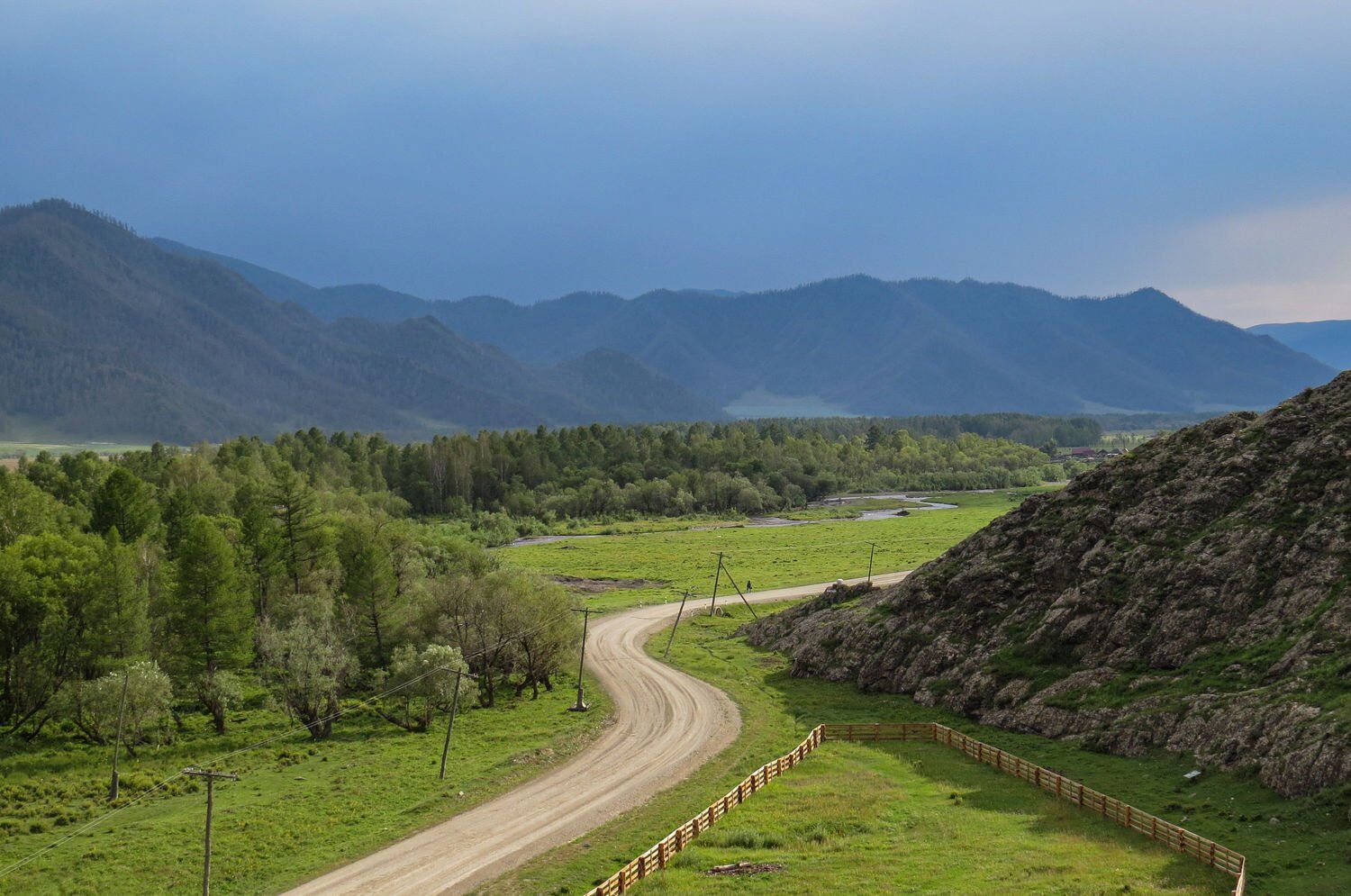
The landscapes of the Karakol valley are very picturesque. For those who are interested in botany, the valley is a real paradise, trees and shrubs grow in abundance here, including fir, larch, birch, cedar, raspberry, honeysuckle and juniper, which is revered by Altaians. In early June, the first edelweiss appear in the valley. In spite of the common opinion that this flower grows only in inaccessible places at high altitudes, here, at an altitude of only 900-950 meters above sea level, there are whole edelweiss glades.
Karakol Valley is a native home for a variety of animals and birds. For example, local ground squirrels are practically not afraid of humans, their underground houses are located almost everywhere. So, you can see these funny animals and take good photos at any time, of course, excluding the winter months, when ground squirrels go into hibernation. Higher in the mountains roe deers, red deers, musk deers and, of course, their sworn enemies – wolves live. In the depths of the taiga, you can still meet bears, wolverines and sables.
For birdwatching the valley is just a perfect place. In addition to dozens of species of small birds, different kinds of eagles, like steppe and golden eagles, peregrine falcons and kites are flying in the sky. In recent years, demoiselle cranes and black storks have nested close to the houses of local residents – in May their courting can sometimes be observed right from the windows.
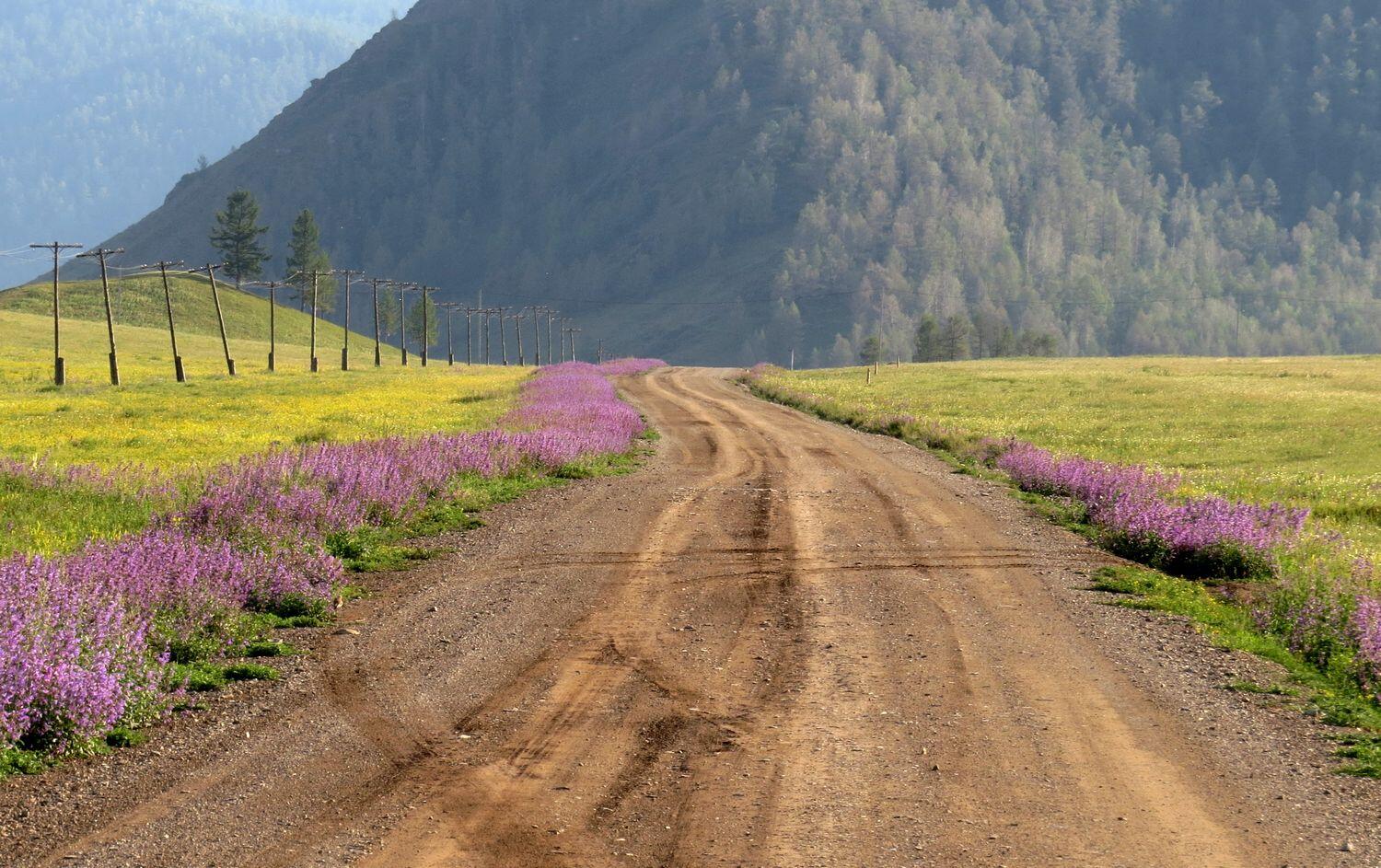

The length of the valley is relatively small – only about 20 kilometers, and it is only 3 km width. In the west, it is blocked by the Terektinsky ridge. One of the most significant mountains of it is the three-headed Uch-Enmek (2821 m). This mountain is considered sacred by local residents, it is forbidden to hunt here and no one except shamans has the right to climb the slopes of this mountain. According to the belief of the locals, if the ban is violated, the main spirit of Altai will “open the bosom”, which means big troubles for people…
From the Altai language, the name Uch-Enmek is translated as “3 tops of the head”, or more precisely – “3 infant fontanelles”. Altai people believe that the three peaks of the mountain connect our world with the upper world, cleansing people’s thoughts from evil and instilling faith in love and good.
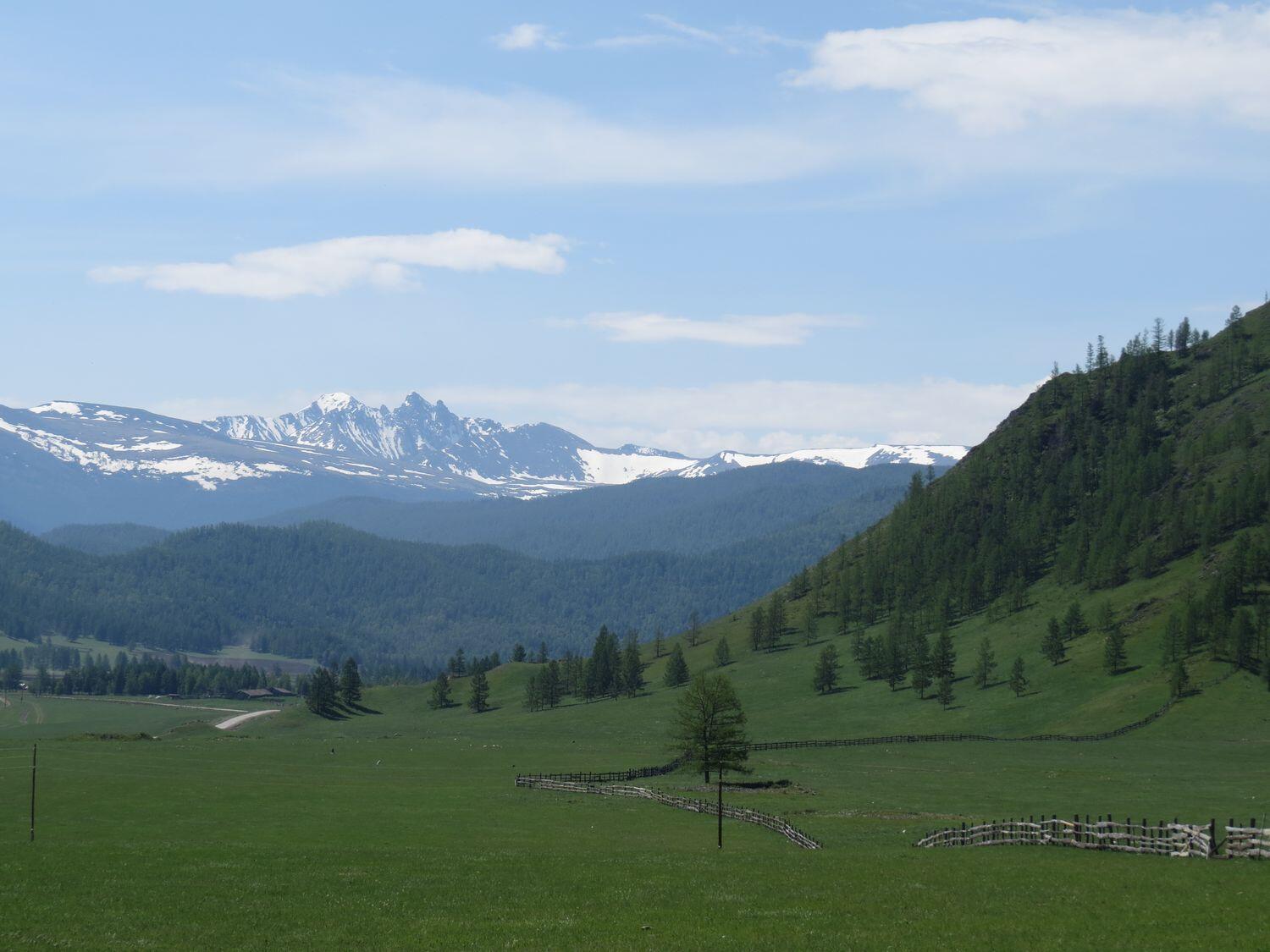
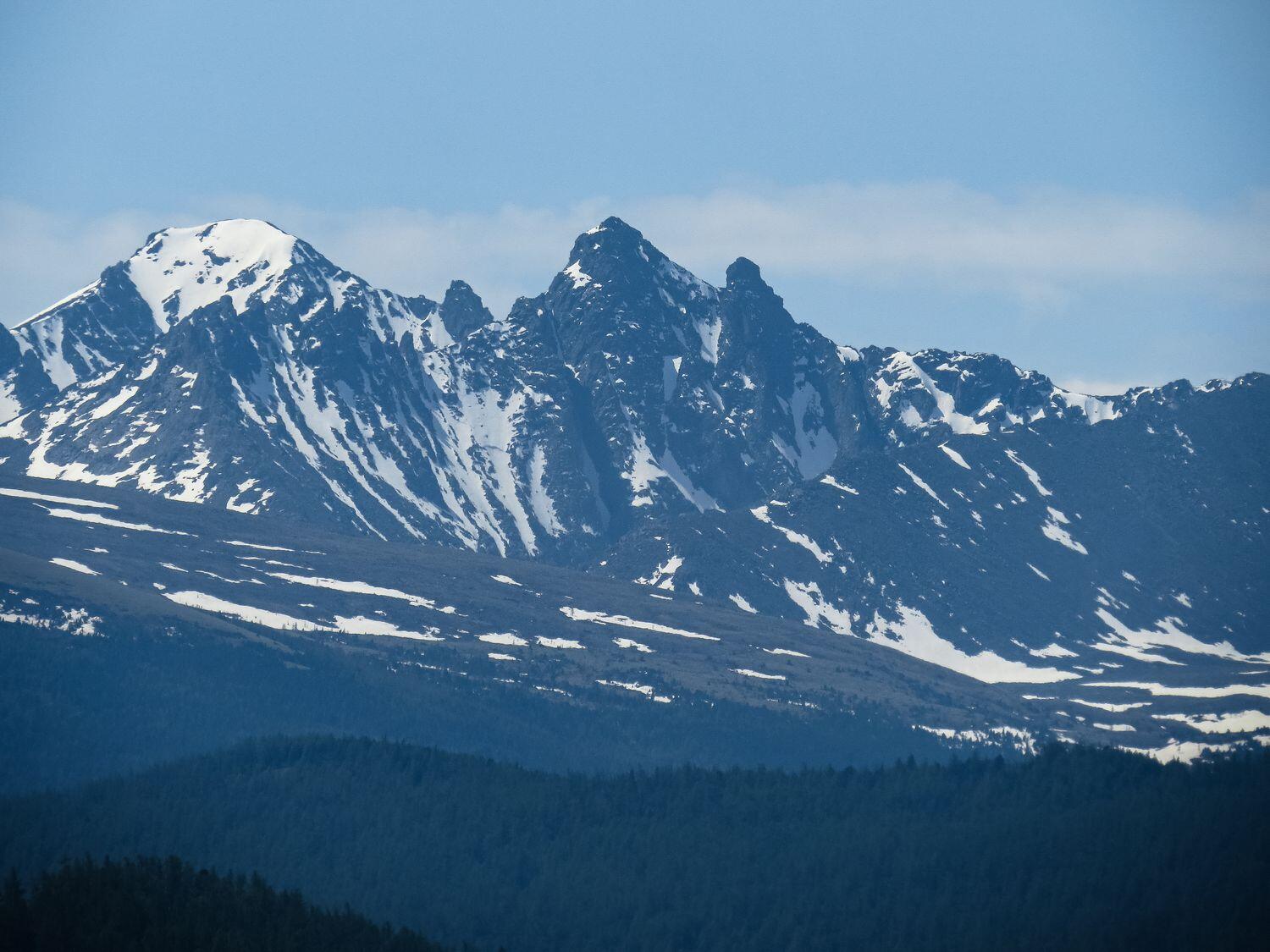
Perhaps that is why people have settled in the Karakol Valley for thousands of years – this is evidenced by numerous monuments of different cultures. You can easily find monuments here from the Afanasyev, Karakol, Scythian and Turkic cultures. The concentration of burial mounds and kurgans is one of the highest in the Altai Republic. In total, about 5000 different archaeological, cultural and historical monuments have been discovered in the valley today.
Not far from the village of Bichiktu-Boom, directly above the road, there is a whole complex of petroglyphs. The entire southern slope of the mountain consists of smooth slabs piled on top of each other, and almost all have inscriptions and drawings. By the way, the name of the village is translated as “Rock with inscriptions”. In total, several hundred images have been recorded here today, but the rocks are still not explored completely. Most of the inscriptions and drawings belong to the period of the Middle Ages, and another part – to the era of Bronze and Early Iron Age.

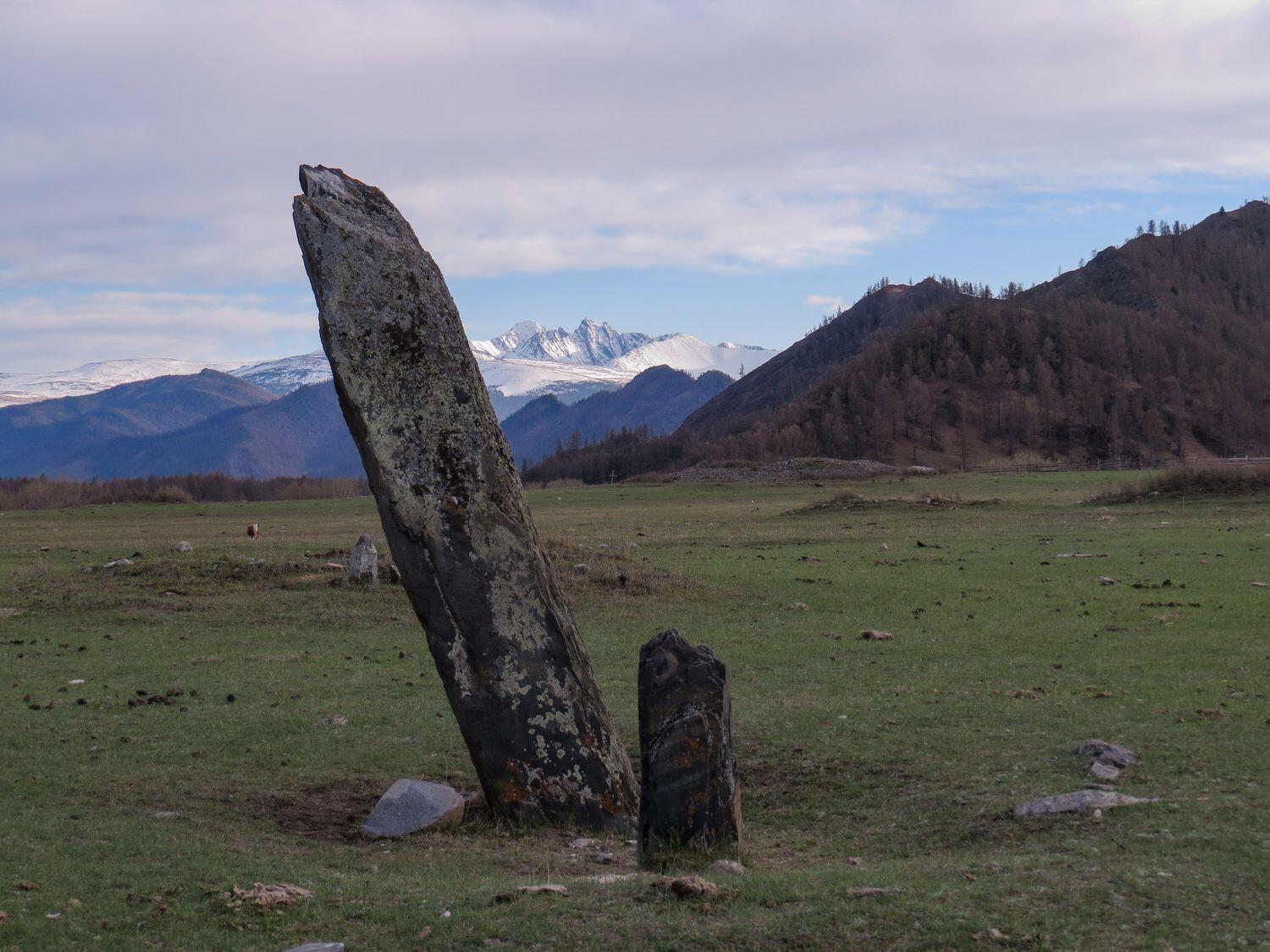
Of particular note is the complex of royal burial mounds in the Bashadar area. In 1950, archaeological excavations were carried out here, and findings of exceptional importance and variety were obtained. Thanks to the ice lenses in the mound, mummified human remains, wood products, felt, leather, fabrics were perfectly preserved. Now some of the findings are exhibited in the Hermitage in Saint-Petersburg.
The big Bashadar kurgan has a very interesting peculiarity. It is half-surrounded with a huge arc of small groups of rocks, each of the groups has the form of a circle. Historians and archaeologists are still arguing about their purpose, but not any of the versions has yet received a scientific justification.
When conducting geophysical studies, it was found that anomalous magnetic radiation is present on the mounds, which also has the property of changing with large amplitude. The same magnetic field was noted in another place with a lot of Kurgans in Karakol valley – Sooru area.
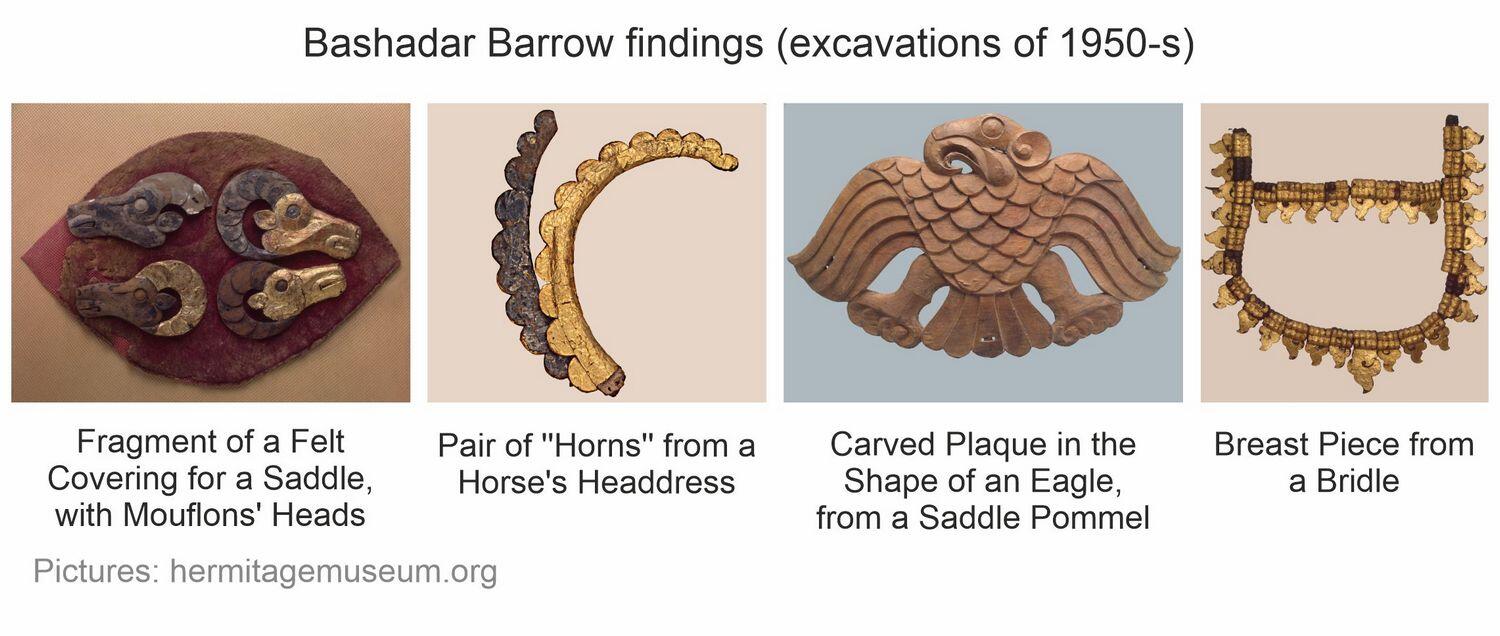
People live in the Karakol Valley today, there are three villages here – Bichiktu-Boom, Boochi and at the very end of the valley, where it is almost closed by the Terektinsky ridge – Kulady. Ethnic Altai people living in the valley still carefully preserve the heritage of their ancestors, observe ancient rituals and perform rituals of worship to the eezi-spirits of these places.
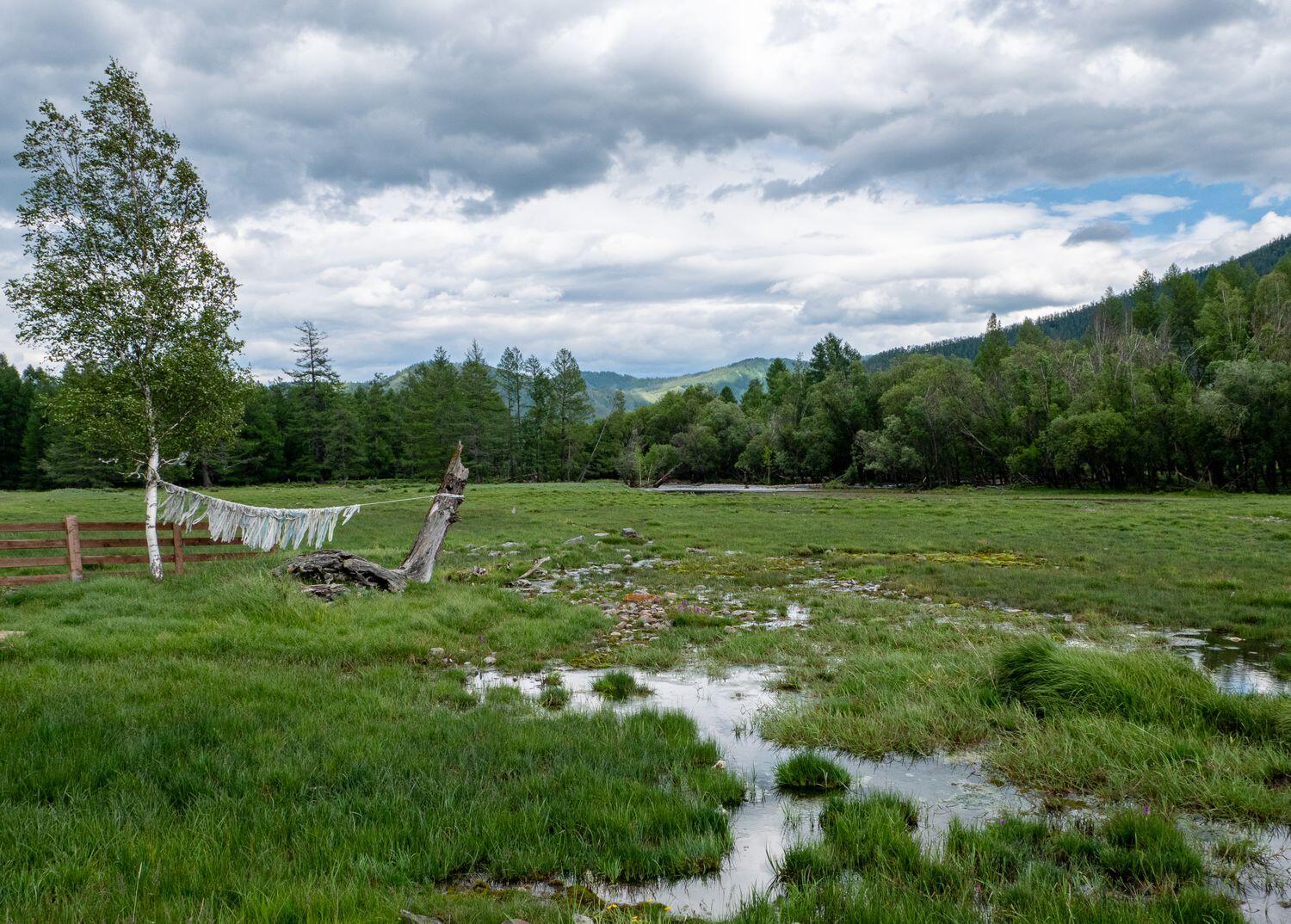
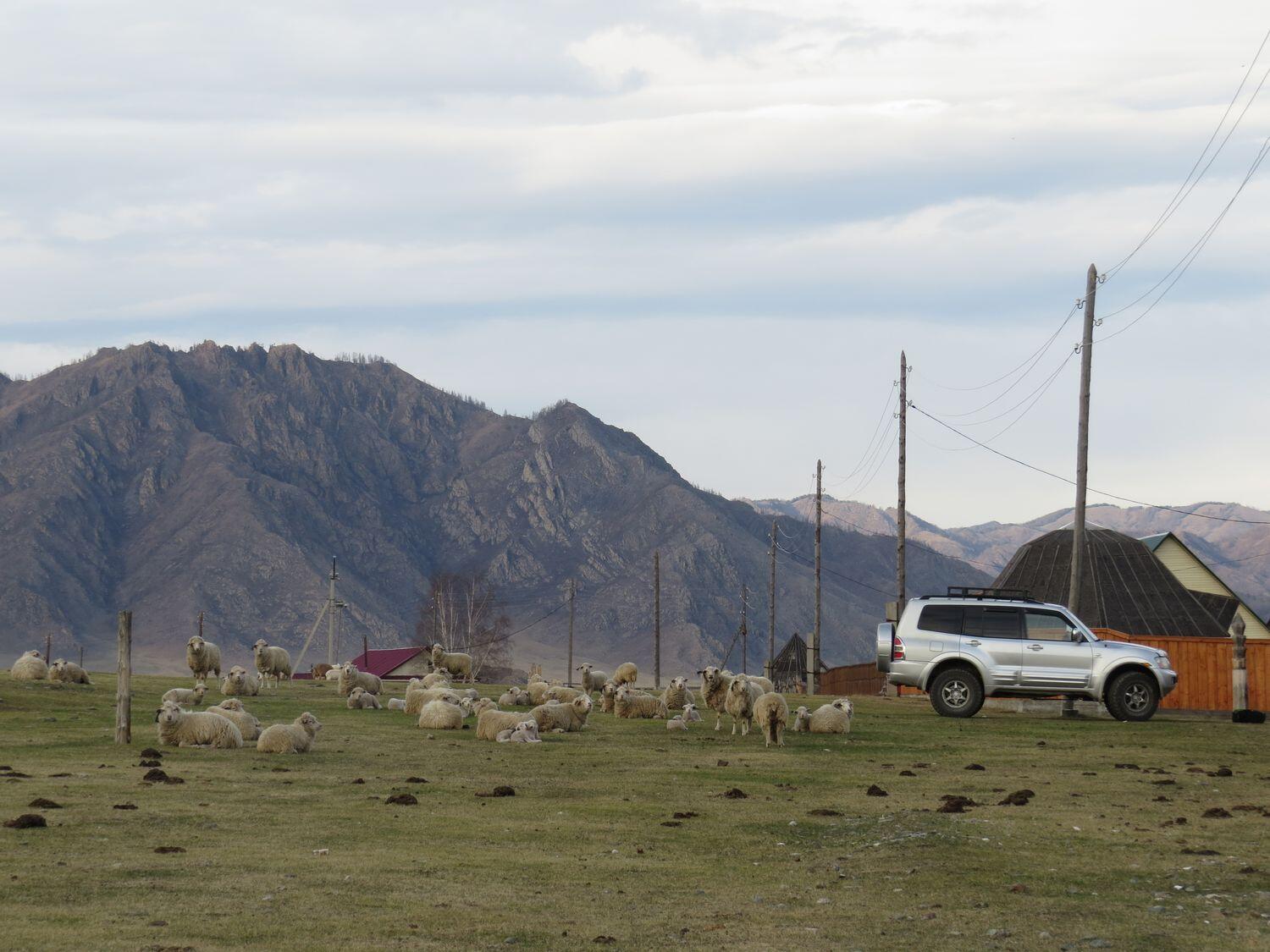
Kaichi Travel
Adventure travel, nature tours to Altai – one of the most beautiful places in Siberia.
© 2018 by Kaichi Travel Privacy Policy Cookie Policy Booking Terms & Conditions
Info
Our tours
Follow us
tel.: +31 645466537
e-mail: [email protected]

